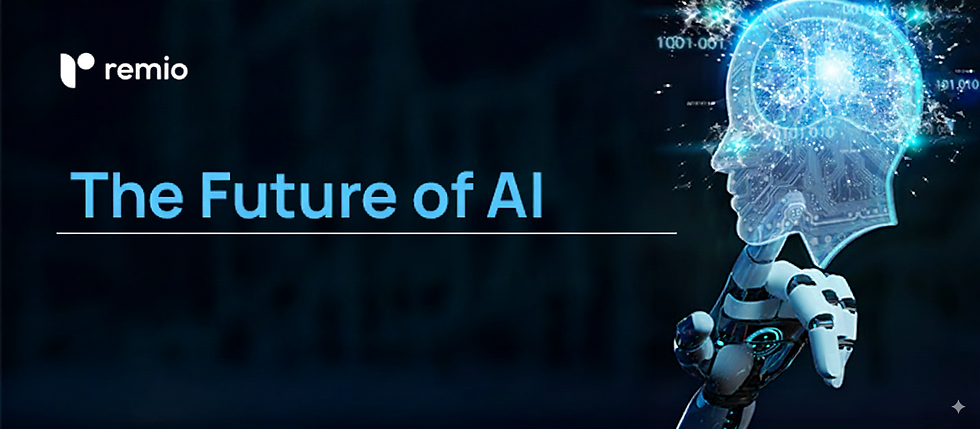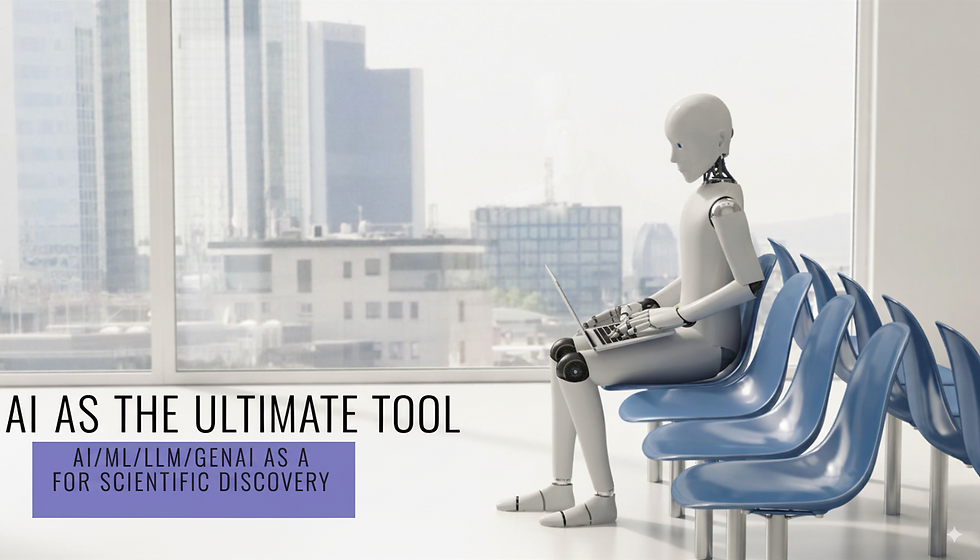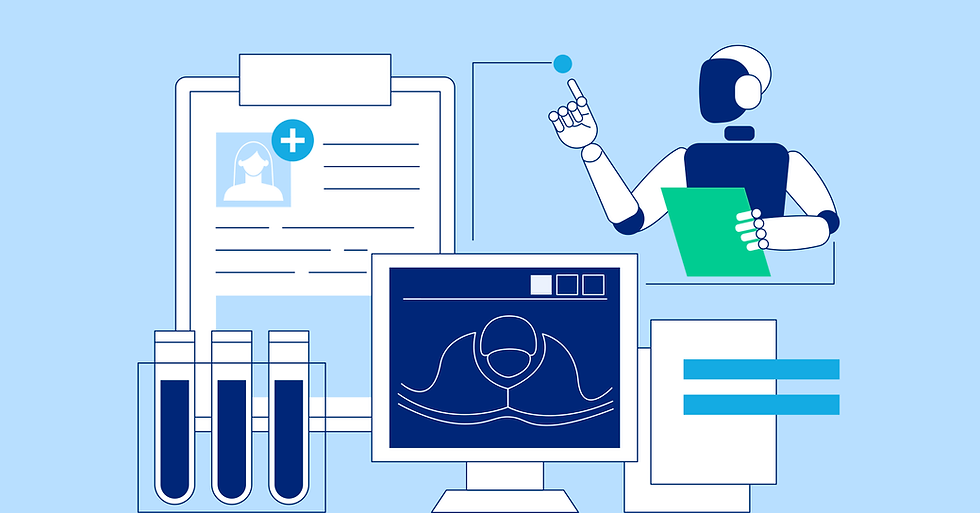Demis Hassabis on the Future of AI: A New Golden Age of Science and Creativity
- Ethan Carter

- Sep 22
- 5 min read

The next decade promises a new golden era of science and creativity powered by Artificial General Intelligence (AGI). Google DeepMind’s CEO Demis Hassabis has famously predicted that AGI—systems as smart as humans across a vast array of tasks—could emerge within five to ten years, sparking breakthroughs from galaxy colonization to radical abundance on Earth will rival humans in the next five yearsHuman-level AI will be here in 5 to 10 years. In this article, we explore how the future of AI will move beyond language into interactive world models and robotics, revolutionize scientific discovery, and reshape art and entertainment through Hassabis’s visionary insights.
The Current AI Engine: Understanding Google DeepMind’s Role

Google DeepMind isn't just another research arm—it’s the engine room driving Alphabet’s AI efforts, consolidating over 5,000 engineers and researchers under one division to accelerate innovation across the company merges AI efforts into one division of 5,000 engineersDeepMind powers Google’s AI products. This structure ensures that advances from DeepMind laboratories—whether in reinforcement learning, transformers, or generative models—flow rapidly into products like Search, Assistant, and Cloud.
Gemini: The Multimodal Powerhouse Behind Billions of Interactions
At the core of DeepMind’s offerings is Gemini, a model that natively handles text, images, audio, and video. By integrating all these modalities, Gemini serves as the backbone for features such as image-based search and real-time video captioning Gemini outperforms in multimodal benchmarksBillions of daily interactions powered by Gemini. Its ability to unify different data types positions it as a cornerstone for the next generation of interactive and immersive AI applications.
A Glimpse into the Future of AI: Interactive World Models like Genie

Genie represents a leap from static content to fully interactive, AI-generated worlds. By synthesizing environments on-the-fly from simple text descriptions, Genie enables experiences such as exploring a medieval village or simulating astrophysical experiments without manual asset creation Genie generates interactive 3D worldsGenie uses intuitive physics learned from videos.
What is Genie? Going Beyond Static Video
Genie’s innovation lies in its ability to treat text prompts as dynamic world blueprints, crafting landscapes, objects, and physics in real time. Instead of relying on pre-rendered assets, Genie learns environmental rules by analyzing millions of internet videos Genie learns physics from videosinteractive worlds from a single text prompt.
How Genie Works: Reverse-Engineering Intuitive Physics
Rather than programming physics equations by hand, Genie extracts statistical regularities of object interactions—rolling, bouncing, fluid dynamics—directly from video data. This learned intuitive physics lets it predict how new environments should behave under user interactions learns intuitive physics by watching videosreverse-engineering environmental dynamics.
Why Understanding the Physical World is the Key to AGI
Hassabis argues that AGI must be embodied, capable of perceiving and acting in three-dimensional spaces. Without true world models, AI remains confined to abstract text, unable to perform tasks like real-world navigation or robotic assembly. Genie’s success marks a crucial milestone toward AI systems that can learn by doing, bridging the gap between language and physical intelligence AGI requires understanding of the physical worldembodied intelligence is critical for robotics.
The Next Frontier: The Rise of General-Purpose Robotics
DeepMind’s Vision-Language-Action (VLA) models integrate perception, language, and control, teaching robots to follow verbal commands like “pick up the blue box and place it on the table” with human-level dexterity VLA enables natural language motor controlrobots understand instructions through Gemini robotics.
From Vision to Action: Teaching AI to Interact with the World
By unifying visual recognition and motion planning into a single architecture, VLA models remove the need for extensive manual programming. This approach accelerates deployment in sectors such as logistics, healthcare, and home assistance, where environments are unpredictable and tasks vary widely.
The Android for Robotics Strategy
Hassabis envisions a universal robotics OS—an Android for Robotics—that abstracts hardware differences, enabling developers to build applications once and run them on any compliant robot. This platform-centric strategy could spark a robotics renaissance akin to the smartphone boom following Android’s launch universal OS for diverse robotic hardwareproliferation of robotics companies post-Android.
Humanoid vs. Specialized: Which Robot Form Factor Will Dominate?
While specialized robots excel in factories, Hassabis predicts humanoid robots will dominate general-purpose applications, as our world—stairs, chairs, door handles—is built for human anatomy. He anticipates a wow moment when a humanoid platform matches human agility, enabling seamless integration into daily life humanoids crucial for human-centric environmentsspecialized robots vs. humanoid versatility.
AI as the Ultimate Tool for Scientific Discovery

AlphaFold revolutionized protein structure prediction, but Hassabis believes AI’s greatest impact will be in accelerating science across disciplines—from materials design to climate modeling—by automating hypothesis generation and simulation AlphaFold’s protein insightsAI-driven fusion reactor optimization.
Beyond AlphaFold: The Next Wave of Scientific Breakthroughs
AI is now tackling challenges such as designing novel alloys, controlling tokamak reactors, and predicting extreme weather events. These applications illustrate how AGI could shorten discovery cycles from decades to months, unlocking solutions for global health, energy, and sustainability crises.
Isomorphic Labs: A Quest to Revolutionize Drug Discovery
Built on AlphaFold’s legacy, Isomorphic Labs uses AI to model drug-protein interactions at atomic resolution, shrinking development timelines from years to weeks. Their platform has already identified promising candidates for neurodegenerative and infectious diseases, demonstrating AI’s potential to transform medicine Isomorphic Labs accelerates drug discoveryshortening timelines from years to weeks.
The Missing Ingredient: What Separates AI from True Scientific Creativity?
Despite AI’s pattern-recognition prowess, it currently lacks the intuitive leaps and serendipitous insight of human scientists. Achieving true AGI in science will require integrating curiosity-driven exploration and meta-learning capabilities that mirror human creativity.
Redefining Creativity: How the Future of AI Will Reshape Art and Entertainment
Generative AI tools democratize creative expression, allowing anyone to produce professional-grade images, music, and stories by simply describing their vision democratizing creative expressiontext-to-video tools for immersive storytelling.
Democratizing Creativity for Everyone
Platforms like DreamStudio and Sora enable nonexperts to generate high-fidelity visuals and animations, dissolving barriers to entry and fueling a surge of new art forms and social media content.
A Superpower for Professionals: 100x Productivity for Creatives
Studios report that AI-assisted pipelines accelerate concept-to-production workflows by orders of magnitude, enabling rapid prototyping and iteration for game developers, filmmakers, and designers.
The Rise of Co-Created, Personalized Entertainment
The future of media will be co-created, with users customizing narratives and environments—such as living out scenes from their favorite novels in personalized VR spaces—blending consumption with creation in unprecedented ways.
Conclusion
The future of AI hinges on teaching machines to understand and co-create our physical and creative worlds. Demis Hassabis’s vision of AGI within a decade heralds a new renaissance in science, robotics, and art—a golden era where human ingenuity and artificial intelligence collaborate to solve humanity’s greatest challenges. As we advance, breakthroughs in embodied world models, universal robotics platforms, and AI-driven creativity will define our collective journey toward radical abundance, boundless exploration, and a profound partnership between humans and machines.
Frequently Asked Questions (FAQ)

Q1: What is AGI, and how is it different from the AI we have today? AGI refers to systems capable of human-level performance across diverse tasks—reasoning, planning, and creativity—whereas current models specialize in narrow domains.
Q2: How do AI “world models” like Genie actually work? They learn intuitive physics by analyzing millions of videos, extracting environmental rules, and using them to generate consistent, interactive 3D worlds from text prompts.
Q3: Will the future of AI lead to humanoid robots in our homes? Very likely. Hassabis argues that humanoid robots are essential for general use in human-centric environments, and significant hardware breakthroughs are expected within a few years.
Q4: What are the biggest challenges preventing AGI? Key barriers include enabling true creativity, achieving advanced reasoning with intuitive leaps, ensuring consistent cross-domain performance, and supporting continual learning.
Q5: Will AI’s energy demands cause an environmental crisis? Training advanced models is energy-intensive, but serving users is becoming exponentially more efficient. Hassabis believes AI will help solve climate challenges by designing sustainable energy solutions.
Q6: What is a realistic timeline for these advanced AI applications? Hassabis predicts AGI within the next ten years, with major breakthroughs in interactive world models and robotics appearing within two to five years.


